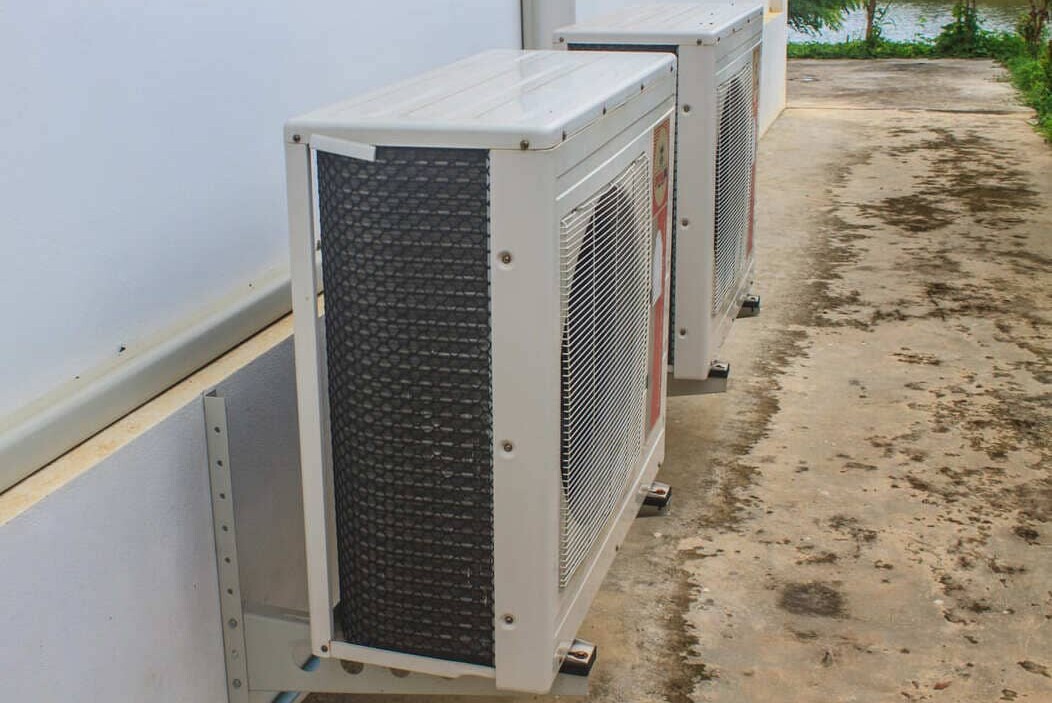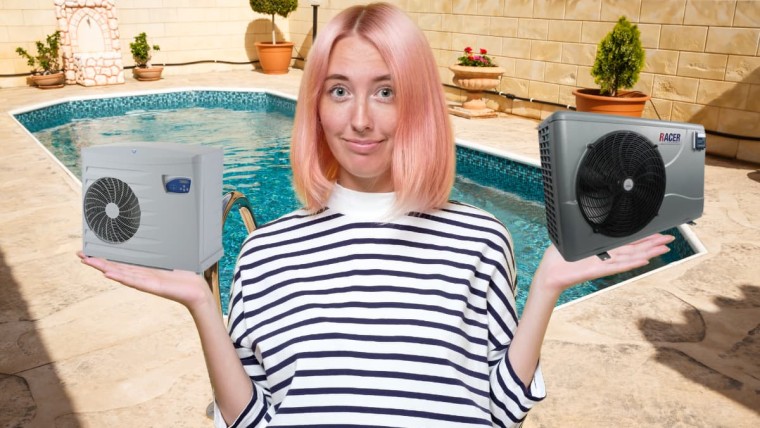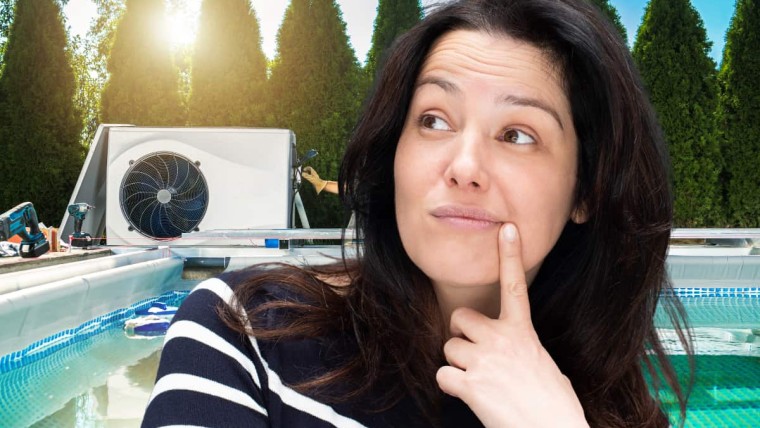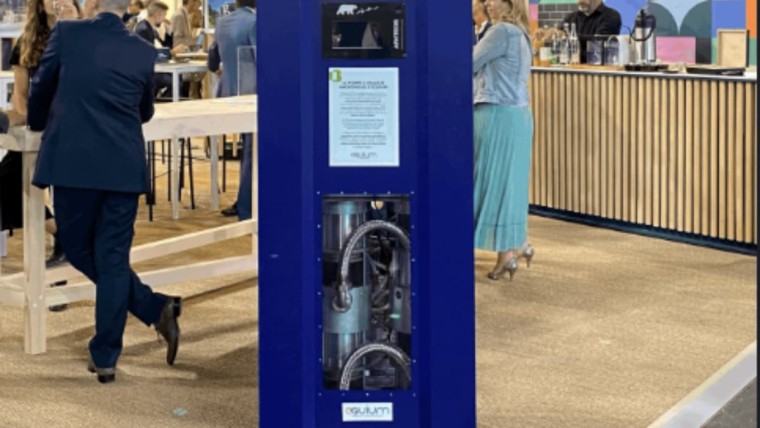This fashionable heating device, which is popular for its use of renewable energy, often remains a mystery as to its operating principle. By reading this article, you will understand the principle behind air-water heat pumps.
An air-water heat pump absorbs calories from the outside air thanks to the endothermic character of the evaporation reaction of a refrigerant. It distributes the calories to the water of the domestic network thanks to the exothermic property of the condensation of the same refrigerant.
The definition above is the "complicated" way of explaining but it is possible to popularize it, and when it is understood we can go into detail
The principle of operation of the PAC Air Water popularized.
Fridge analogy
We all have a fridge at home. If you want it to work, it's better to leave the door closed. The reason is simple and we are all intuitively aware of it. It's because we have to limit the size of the volume to be cooled. We only want to cool the food that is in the fridge.
But what happens if you open the fridge door? It is obvious that the food will warm up in contact with the ambient air. The fridge is still working because it doesn't know that the door is open. Therefore, without knowing it, it tries to cool a volume much too big for its small compressor, it tries to cool the whole room.
The result is that his little compressor is always working. It looks at the set point it has to reach, and until it gets there, it keeps going. And the condenser in the back of your fridge is working at full capacity. It condenses, it condenses, so it heats up because condensation is a reaction that releases heat (exothermic).
Your fridge has become a heater: it has in front of it the volume of the room to be cooled when its door is open. For him it is almost infinite and impossible to cool. So it runs in a loop and heats by condensation.
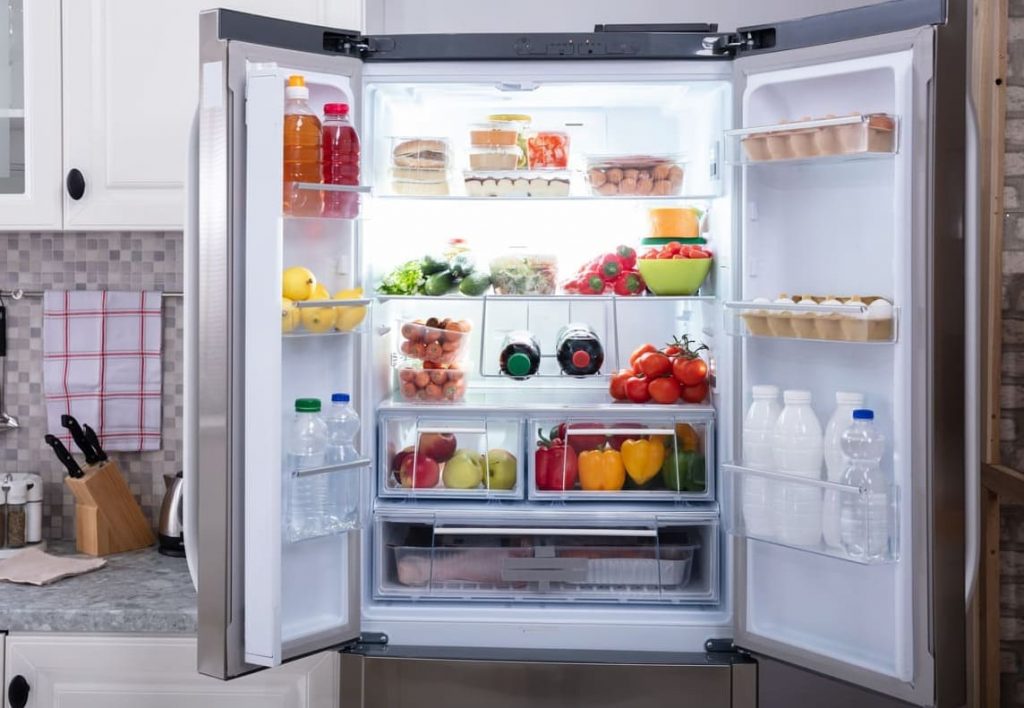
The same principle applies to heating your home with a heat pump. Except that you don't "open the door" on the volume of the room, but on the whole outside environment, the garden..the planet. So we have an "infinite" source to cool. As a result, it is possible to heat the house by condensation at the level of the condenser on the water of the domestic network: the refrigerant redistributes the calories taken from the outside air.
Counter-intuitive to take calories from cold air
It may seem counter-intuitive to heat a room by using the energy of the outside air, when it is very cold outside in winter (-10 / -15°C). And that it is precisely in winter that it must heat the most.
But you should know that whatever the temperature of the air, it still contains calories that can be pumped out. Of course, the colder and drier it is, the less calories it contains, which is why heat pumps work a little less well in winter. That is, they consume more electricity to provide the same amount of heating.
This fact naturally appears counter-intuitive to us because we instinctively know that heat always passes from the warmest to the coldest environment. You know that if you open the window in winter in the middle of the night, you will quickly shiver because all the heat in the house will have gone out the window.

The magic of the heat pump is to succeed in the reverse passage! That is to say the passage of heat from the coldest medium to the warmest medium. This is where the term "heat pump" comes from, because heat is pumped into the natural environment. It fights against this natural passage from hot to cold, just like the pump of a well manages to overcome gravity by making the water pass from its lowest potential energy point to a higher potential energy point.
More details on the operation of the air-water heat pump
You should have an intuitive grasp of the principle of the air-to-water heat pump by reading the first two paragraphs. Now let's get into the details. What is the mystery behind the heat pump's ability to reverse the natural principle of heat transfer?
The refrigerant: the heat pump's conductor
The magic of the heat pump is due in large part to the property of refrigerants to evaporate at very low temperatures and thus capture energy from the natural environment even in winter.
We all know that water, which is the most common natural fluid, evaporates around 100°C. But this is only valid under standard conditions, i.e. at atmospheric pressure 1013 HPa. It passes then from the liquid state to the vapor state, we say that it evaporates. This evaporation reaction is said to be endothermic, i.e. it absorbs a quantity of energy (calories) from the environment in which it takes place.
However, if we are at the top of Mount Everest, the atmospheric pressure is not at all the same: it decreases by almost 3 times (about 350HPa). Water evaporates much faster, in this case from about 70°C. This illustrates the fact that we can play on the pressure of a fluid and thus modulate its evaporation temperature.
We can quickly make the connection with the heat pump. If we manage to modulate the pressure of the refrigerant gas according to our wishes, then we will be able to make it evaporate at the temperature we want, and in this case we want it to evaporate at the temperature of the outside air, in order to capture its calories.
Let's take the example of the refrigerant gas R32 which will soon be in all residential heat pumps, since R410A is slowly going towards a programmed ban (2025) and all manufacturers have started to use it. Its boiling temperature (evaporation) is -51.7°C at atmospheric pressure. If we are in Siberia, that's fine, but we are not in Siberia, so we will have to modulate the pressure so that it evaporates when it is -6°C for example. It will have to rise to 6500HPa for that.
This is why in heat pump systems, in addition to the heat exchangers (evaporator on air + condenser on water), there are two devices that allow the pressure of the fluid to be modulated. These are the compressor and the expansion valve. These are placed respectively after and before the evaporator and they allow to create an adaptive regulation of the gas pressure so that whatever the temperature outside, the gas can evaporate as it should and capture the maximum of calories (according to the need for heating)
Special case of the air-water heat pump
For an aerothermal heat pump, the calories are captured on the outside air, at the evaporator. They are returned to the domestic water network through a water condenser, in which there is on one side the refrigerant that passes, and on the other side the water. The heat exchange takes place through the walls of the exchanger, and there is of course no contact between the water and the refrigerant.
Some brands use a plate heat exchanger to make the condenser, while others use a coaxial condenser, which is generally more reliable and durable, and requires less maintenance.
In the case of a split heat pump (separate indoor and outdoor units), the condenser is in the indoor module. The refrigerant circulates between the indoor and outdoor modules.
In the case of a monobloc heat pump (everything is in the outdoor unit) the condenser is outside in the unit and water circulates between the unit and the interior of the house. The water recovers the heat from the condenser and exchanges it with the buffer tank in the technical room, through an exchanger.
Also read on the subject:
How much does a heat pump consume?
What are the disadvantages of a heat pump?
What should I choose between a single or split heat pump?

Julien G.
Juliena mechanical engineering graduate and specialist in climate engineering since 2009, has become a writer specializing in renewable energies, with expertise in heat pumps and photovoltaic solar panels for individual housing.
See all articles by this author
